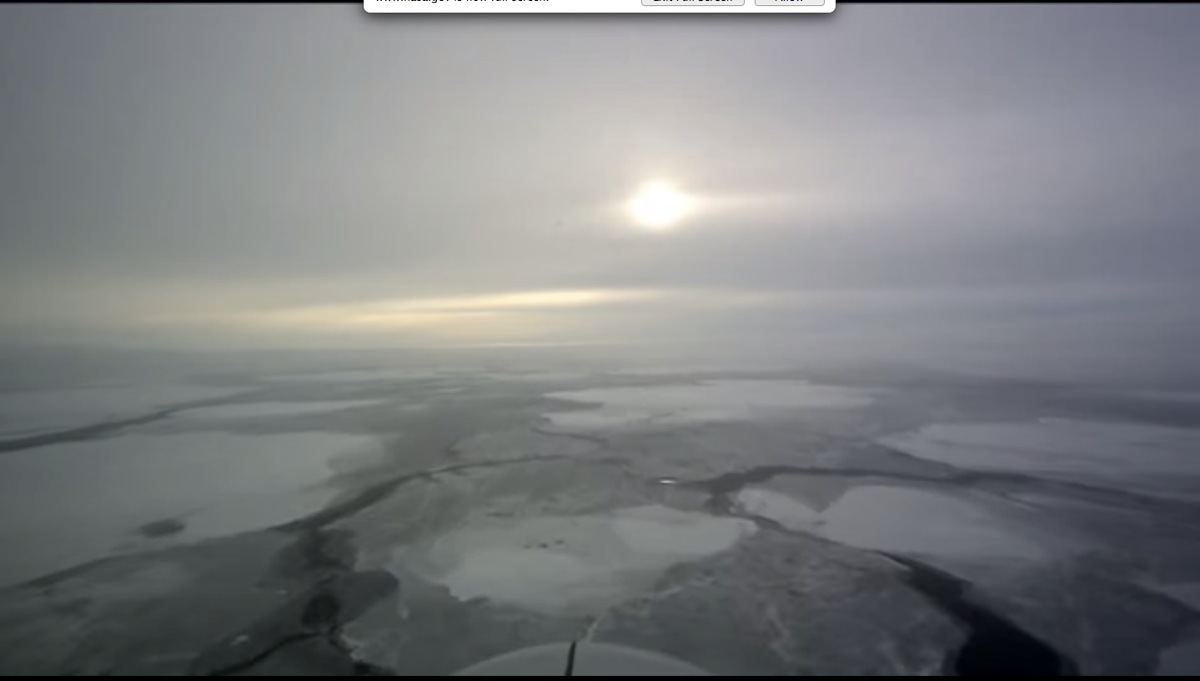How NASA Is Tracking Earth's Melting Arctic Sea Ice (Video)

NASA kicked off a new expedition at the top of the world this week to study melting sea ice in order to learn more about Earth's changing climate.
The space agency's ARISE mission (short for Arctic Radiation IceBridge Sea and Ice Experiment) is designed to monitor conditions in the Arctic during flights scheduled from now until Oct. 1 — the peak of sea ice melt in the summer, according to NASA. Recently, scientists have noticed that the Arctic is losing more of its ice each summer, and the new mission should help them study how sea ice melt is affecting the planet's climate.
Although 2014 doesn't mark a record low for sea ice in the Arctic it still counts as one of the lowest years on record, according to NASA cryospheric program manager Tom Wagner. "The simple fact is this: Since the 1980s, we've lost about two-thirds of our ice from the Arctic," Wagner told Space.com in an Arctic ice video interview.
"The ARISE mission is going to do something special," Wagner said. "It's going to go out and literally look at the radiation balance: how much sunlight hits the Earth, how much makes it to the ice and how much is absorbed by clouds along the way. The ARISE mission is going to go out and measure that." [See images of Earth's vanishing ice]
The ARISE fleet of scientific instruments is flown through, above and below clouds by a huge C-130 plane tricked out to make room for the instrumentation. The plane has holes in it that allow for the placement of lasers, radiometers to measure radiation and other technology to measure the thickness of sea ice, Wagner said.
The mission was also put together on a very short time scale. It only took seven months to get everything ready for flight.
"One of the biggest challenges with this new ARISE mission was pulling together all the mission objectives, the logistics, the aircraft, the data products, where we're going to deploy to in less than seven months, which is typically unheard of," Christy Hansen, ARISE project manager said in a NASA video describing the mission. "You usually have over a year to do all of that stuff."
Get the Space.com Newsletter
Breaking space news, the latest updates on rocket launches, skywatching events and more!
NASA has a fleet of satellites and other ground instruments that monitor Earth to keep track of changes happening on the planet. Although the satellite images help, ARISE will give scientists much-needed information about how clouds can affect global climate change.
"A wild card in what's happening in the Arctic is clouds and how changes in clouds, due to changing sea-ice conditions, enhance or offset warming," Bill Smith, ARISE principal investigator said in a statement.
Follow Miriam Kramer @mirikramer and Google+. Follow us @Spacedotcom, Facebook and Google+. Original article on Space.com.
Join our Space Forums to keep talking space on the latest missions, night sky and more! And if you have a news tip, correction or comment, let us know at: community@space.com.

Miriam Kramer joined Space.com as a Staff Writer in December 2012. Since then, she has floated in weightlessness on a zero-gravity flight, felt the pull of 4-Gs in a trainer aircraft and watched rockets soar into space from Florida and Virginia. She also served as Space.com's lead space entertainment reporter, and enjoys all aspects of space news, astronomy and commercial spaceflight. Miriam has also presented space stories during live interviews with Fox News and other TV and radio outlets. She originally hails from Knoxville, Tennessee where she and her family would take trips to dark spots on the outskirts of town to watch meteor showers every year. She loves to travel and one day hopes to see the northern lights in person. Miriam is currently a space reporter with Axios, writing the Axios Space newsletter. You can follow Miriam on Twitter.









